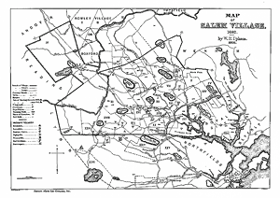Salem Village Discord
Although Salem Village did not have the greatest number of accused witches — that sad distinction, we have seen, goes to Andover — it was a pivotal center of events in 1692. The outbreak began in the village; the primary afflicted girls and their supportive families were residents of the village; and the village's minister, Samuel Parris, was a zealous and relentless advocate of the proceedings. Hence the perennial question: Why Salem Village?
Salem Village had a long history of factionalism and contention. There were disputes with Salem Town, contention with its first three ministers as well as with its first ordained minister, Samuel Parris, and controversies involving its elected Committee of Five. The 1692 witch-hunt took place within the context of village divisiveness. But did these divisions actually provoke and shape the outbreak, and if so, in what way? To investigate these questions, it is necessary to examine Salem Village's factional divisions, adapting an approach first systematically exploited in Paul Boyer and Stephen Nissenbaum's pioneering study, Salem Possessed. Using information gathered from church and village records, petitions, and committee lists, we can identify social and economic characteristics that distinguished Salem Village's clashing factions and consider whether these differences contributed to the witch hunt of 1692.
To explore Salem Village's social, political, and economic fault lines, click Next.
